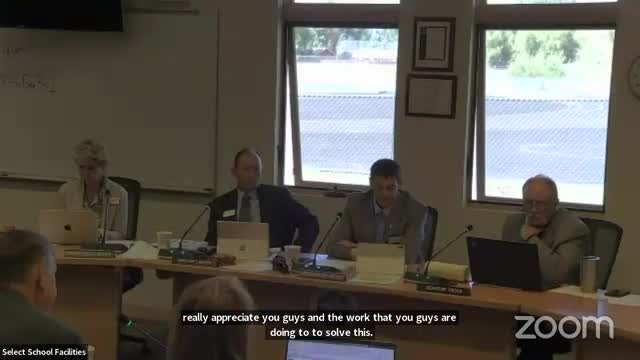Schools undergo major ranking shifts in new assessment report
August 22, 2024 | Select Committee on School Facilities, Select Committees & Task Force, Committees, Legislative, Wyoming
This article was created by AI summarizing key points discussed. AI makes mistakes, so for full details and context, please refer to the video of the full meeting. Please report any errors so we can fix them. Report an error »

In a recent government meeting, significant discussions centered around proposed legislative revisions and the assessment of school conditions across the state. The committee addressed the need for clarity in statute 21-3110, with a motion to direct the Legislative Service Office (LSO) to draft a bill reflecting the requested changes. The motion received unanimous support, indicating a collective agreement on the necessity of these modifications.
Additionally, the committee discussed the upcoming implementation of emergency rules concerning charter schools. These rules aim to rectify discrepancies in how charter schools are assessed compared to traditional schools, particularly regarding square footage calculations. The urgency of these amendments was emphasized, as they are essential for aligning charter school evaluations with established standards for regular schools.
A comprehensive review of school conditions was also presented, highlighting a significant shift in rankings from the 2016 to the 2023 assessments. The methodology for evaluating school conditions changed, with the 2023 assessment incorporating not only the buildings but also site features such as athletic fields and infrastructure. This broader scope resulted in 370 out of 388 buildings moving ten or more spots in their Facility Condition Index (FCI) scores.
The committee noted that substantial investments—over $1 billion—were made by school districts in building maintenance and improvements during this period. This funding included major maintenance, component projects, and capital construction, which collectively influenced the condition and ranking of school facilities.
Concerns were raised about understanding the magnitude of shifts in rankings, with a focus on identifying significant changes rather than minor adjustments. The committee acknowledged the need for further analysis to clarify why certain schools experienced drastic changes in their rankings, which could be attributed to various factors, including renovations and insurance-funded repairs.
Overall, the meeting underscored the ongoing efforts to enhance educational infrastructure and ensure equitable assessment practices across the state's schools. The committee's proactive approach in addressing legislative clarity and school condition assessments reflects a commitment to improving educational environments for students.
Additionally, the committee discussed the upcoming implementation of emergency rules concerning charter schools. These rules aim to rectify discrepancies in how charter schools are assessed compared to traditional schools, particularly regarding square footage calculations. The urgency of these amendments was emphasized, as they are essential for aligning charter school evaluations with established standards for regular schools.
A comprehensive review of school conditions was also presented, highlighting a significant shift in rankings from the 2016 to the 2023 assessments. The methodology for evaluating school conditions changed, with the 2023 assessment incorporating not only the buildings but also site features such as athletic fields and infrastructure. This broader scope resulted in 370 out of 388 buildings moving ten or more spots in their Facility Condition Index (FCI) scores.
The committee noted that substantial investments—over $1 billion—were made by school districts in building maintenance and improvements during this period. This funding included major maintenance, component projects, and capital construction, which collectively influenced the condition and ranking of school facilities.
Concerns were raised about understanding the magnitude of shifts in rankings, with a focus on identifying significant changes rather than minor adjustments. The committee acknowledged the need for further analysis to clarify why certain schools experienced drastic changes in their rankings, which could be attributed to various factors, including renovations and insurance-funded repairs.
Overall, the meeting underscored the ongoing efforts to enhance educational infrastructure and ensure equitable assessment practices across the state's schools. The committee's proactive approach in addressing legislative clarity and school condition assessments reflects a commitment to improving educational environments for students.
View full meeting
This article is based on a recent meeting—watch the full video and explore the complete transcript for deeper insights into the discussion.
View full meeting